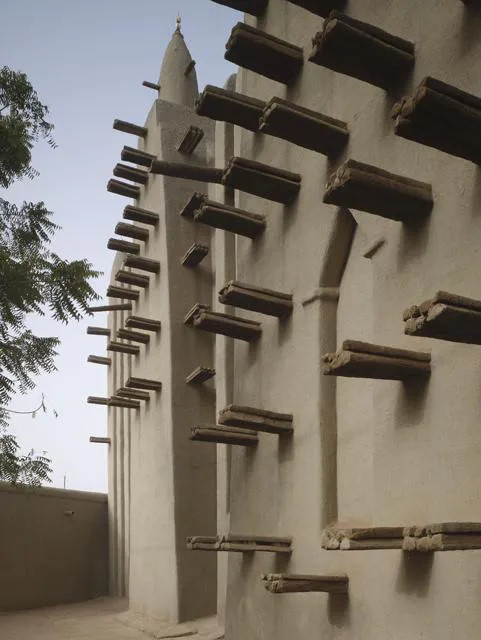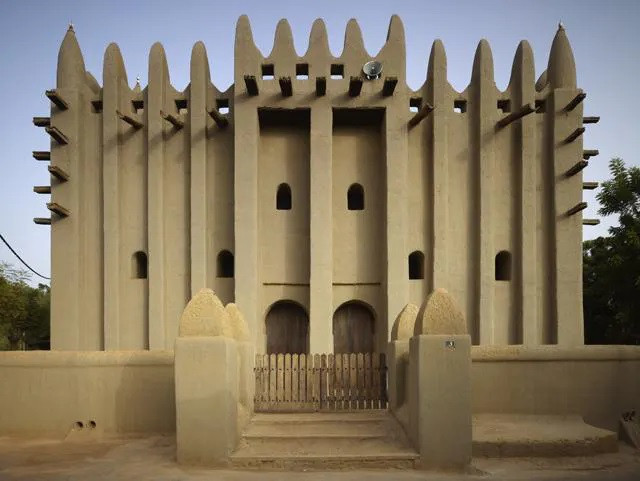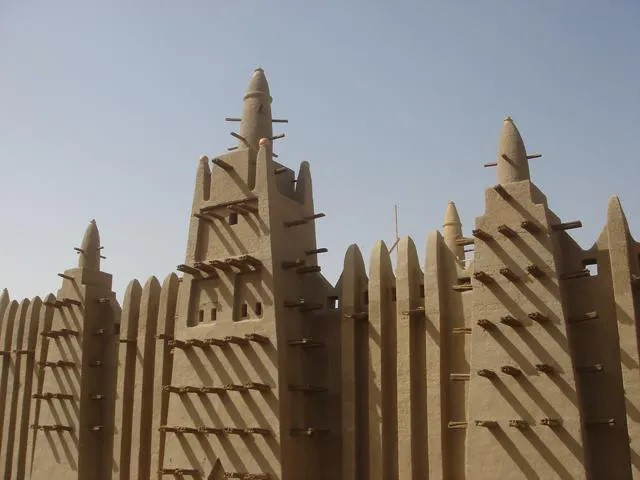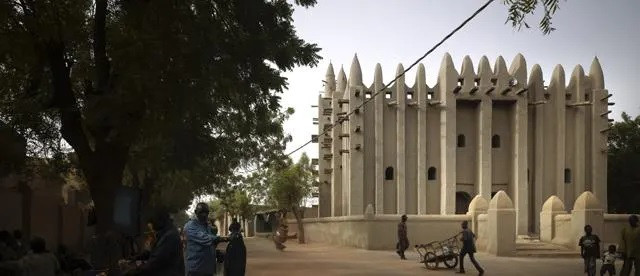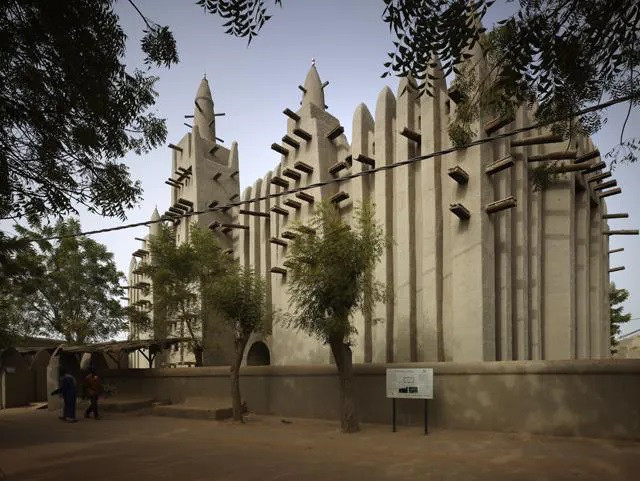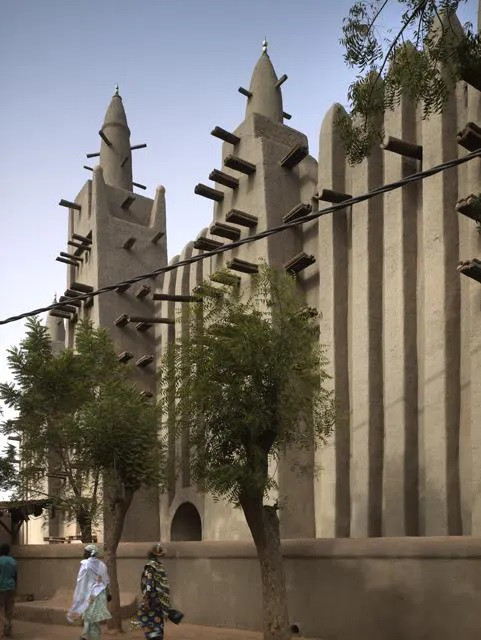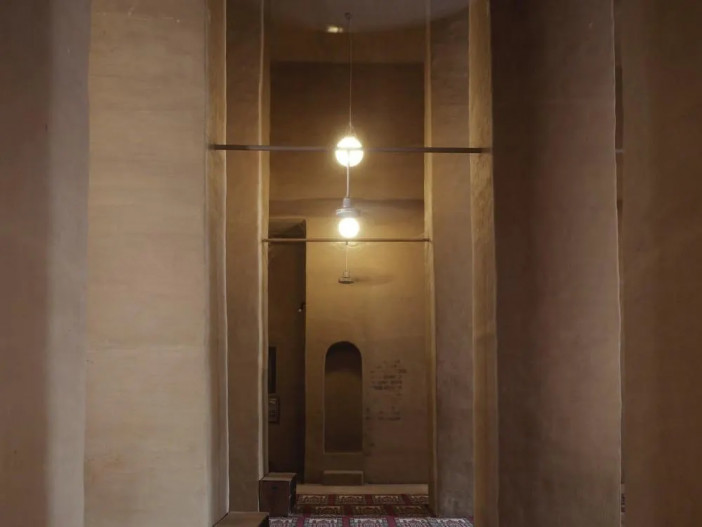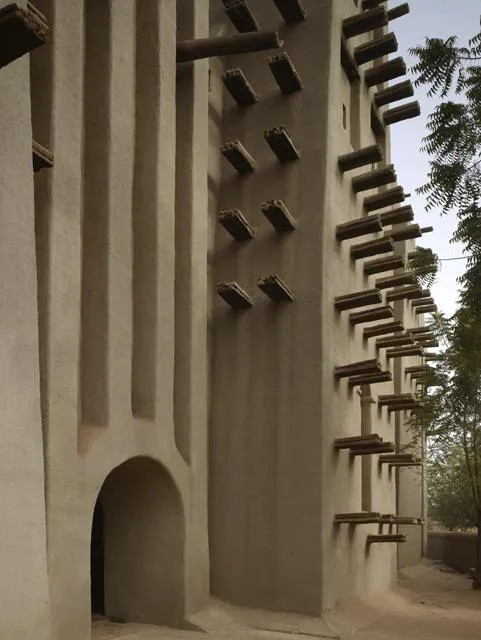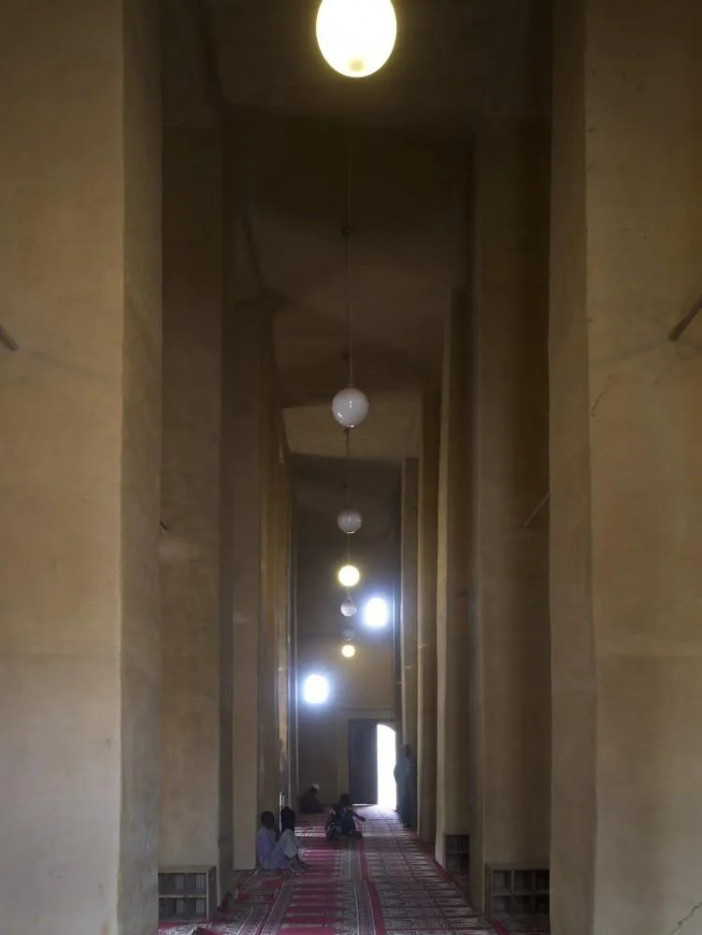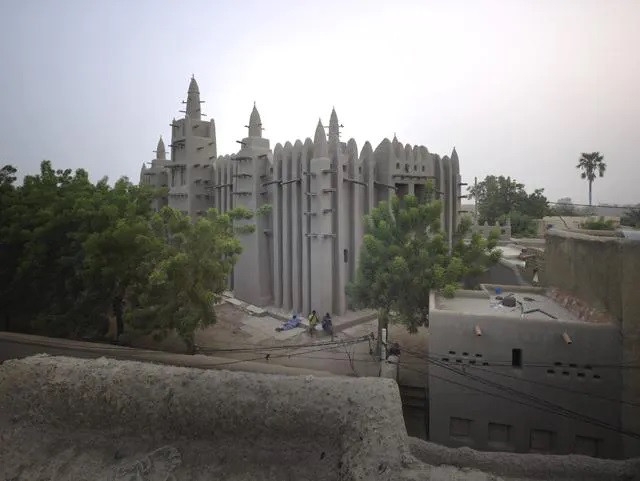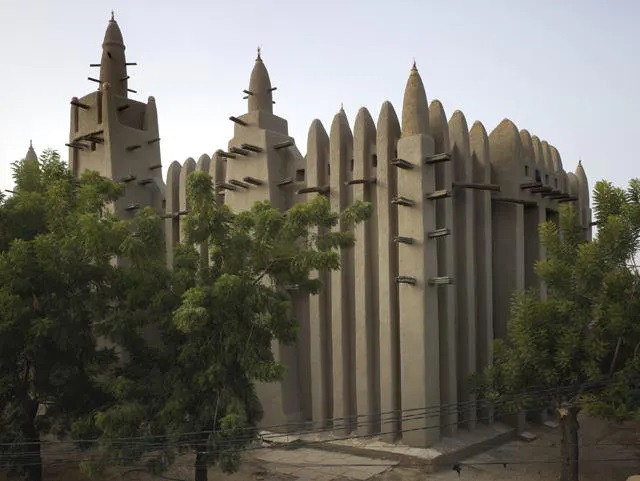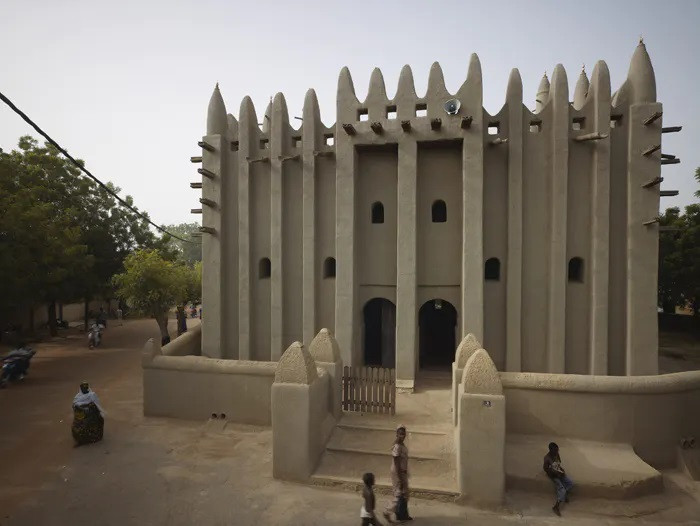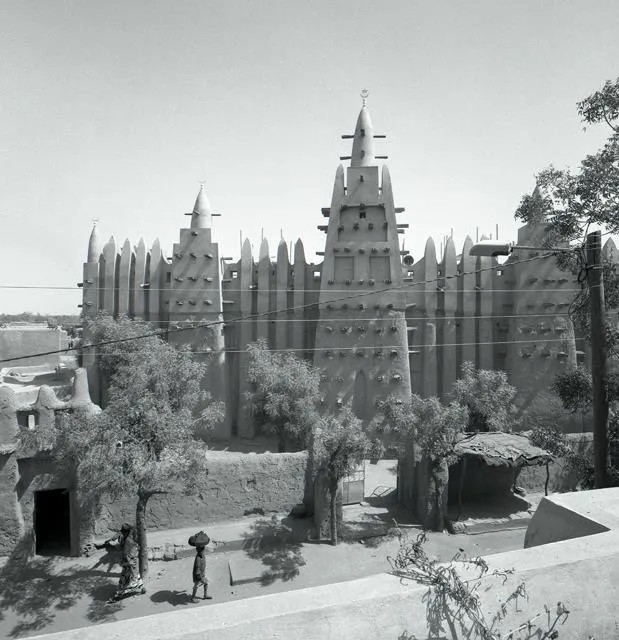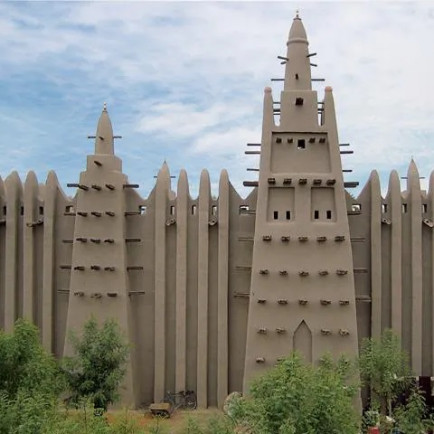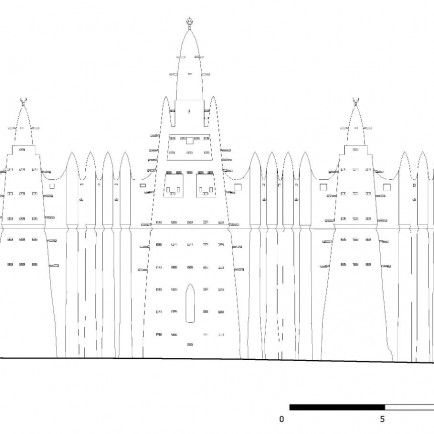Great Mosque of Mopti (Komoguel)
History
The large mosque in Mopti, also known as Mosque of Komoguel, has an area of around 12 to76 square meters and is built in a Soudanese architectural style. The mosque was first built between 1933 and 1935. It was built at the location of another that was constructed in 1908.
Urban and Architectural
The Mosque extends over nearly 100m² and is 15m high. It is composed of two parts: the first is covered and the second is the courtyard. The building is surrounded by a wall whose height varies between 2m40 and 2m90. The roof is supported by massive pillars aligned parallel to the qibla wall (the indication of the direction of Mecca).
Description
In 2004, it started the phases of rehabilitation under the Agha Khan Trust for Culture.The first stage of the restoration work on this significant landmark was devoted to fixing the roof and stabilizing the upper portion of the structure, which had been harmed by the improper application of cement during an earlier restoration effort in 1978.
References
https://www.archnet.org/sites/5396
https://whc.unesco.org/en/tentativelists/5442/
https://en.wikipedia.org/wiki/Grand_Mosque_of_Mopti
Details
Location
FRV3+G9P Mosquée de Mopti, Mopti, Mali
Worshippers
50
Owners
Aga Khan Trust for Culture
Year of Build
1934, rehabilitated 2005
Area
100
Drawings
Map
History
The large mosque in Mopti, also known as Mosque of Komoguel, has an area of around 12 to76 square meters and is built in a Soudanese architectural style. The mosque was first built between 1933 and 1935. It was built at the location of another that was constructed in 1908.
Urban and Architectural
The Mosque extends over nearly 100m² and is 15m high. It is composed of two parts: the first is covered and the second is the courtyard. The building is surrounded by a wall whose height varies between 2m40 and 2m90. The roof is supported by massive pillars aligned parallel to the qibla wall (the indication of the direction of Mecca).
Description
In 2004, it started the phases of rehabilitation under the Agha Khan Trust for Culture.The first stage of the restoration work on this significant landmark was devoted to fixing the roof and stabilizing the upper portion of the structure, which had been harmed by the improper application of cement during an earlier restoration effort in 1978.


